Hamantaschen 3.0: Revisiting an Old Favorite
Sweet or savory, it's a symbol of Purim, a holiday of survival with lessons for our time
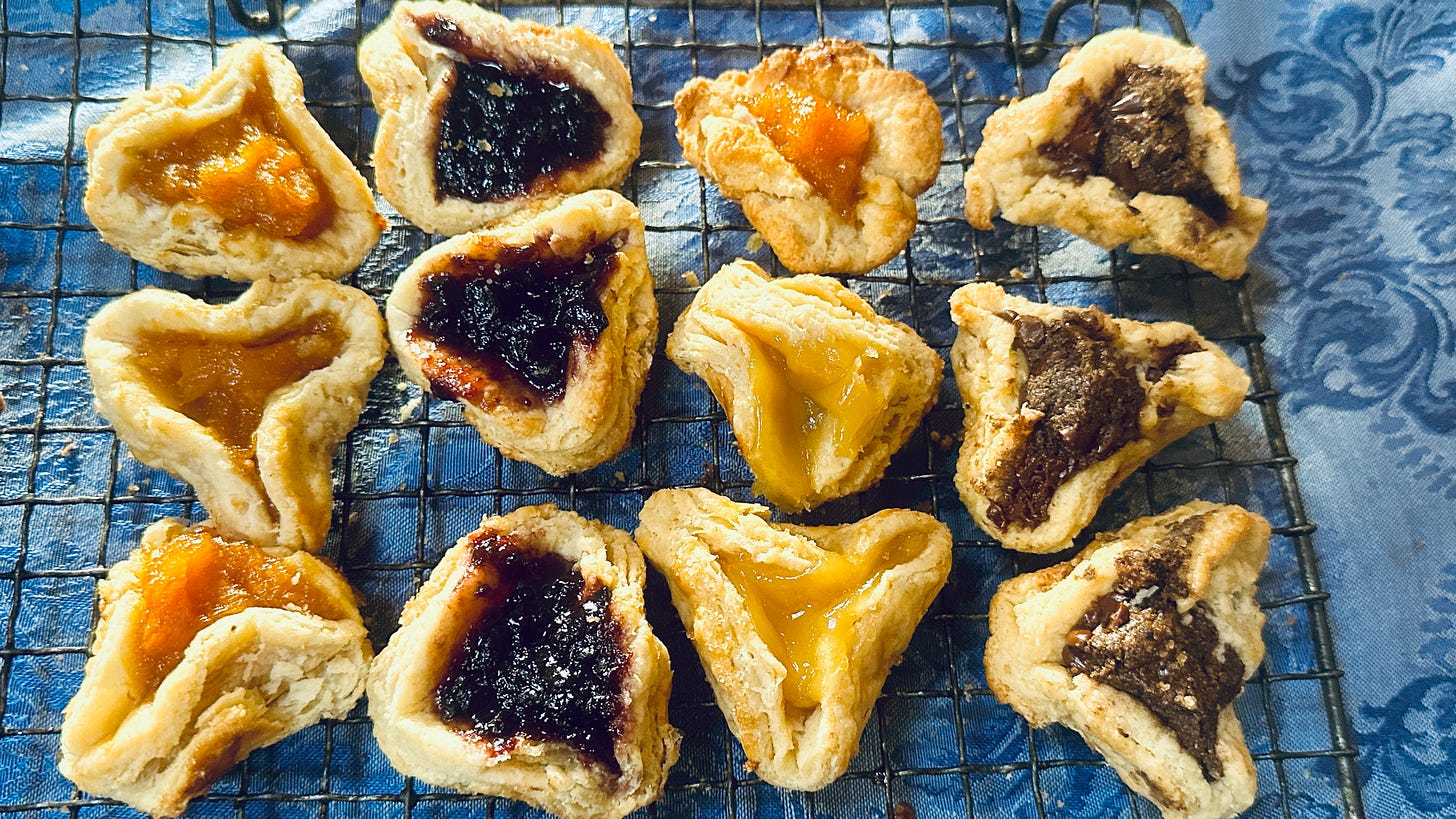
Instagram is awash in creative takes on hamantaschen, the triangular cookie closely identified with the Jewish holiday of Purim, which begins at sundown today, March 6, and runs through Tuesday evening. There are classic hamantaschen filled with poppy seed, jam or prune; others with M&M’s or multicolored sprinkles; even three-sided pitas, pizzas, challah, and bagel and lox hamantaschen for those in search of savory variations.
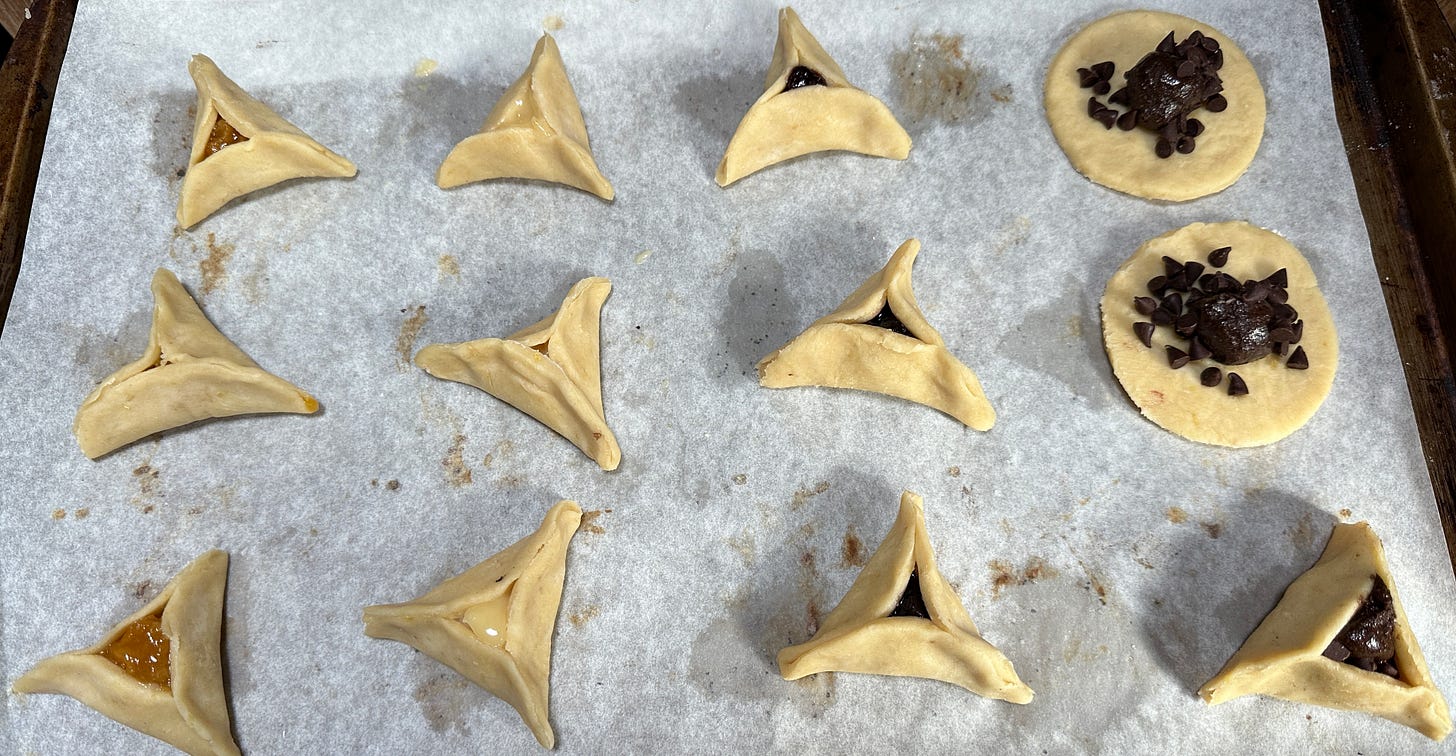
I’m a bit of a traditionalist myself when it comes to this holiday that celebrates the the triumph of ancient Jews of Persia over a foe that sought to wipe them out. I tend to make a favorite hamantaschen recipe from Joan Nathan that I’ve referenced here twice—you can find my post from 2021 by clicking at the link below.
Last year, with Purim arriving on the heels of the Russian attack on Ukraine, I nicknamed my hamantaschen “Putintaschen,” replacing Haman, the villain of the Purim story, with Vladimir Putin the villain in the war to destroy and subjugate Russia’s neighbor. Sadly, not only does that war continue, but there are other tyrants around the world taking inspiration from Putin, along with growing examples of racism and antisemitism.
The resurgence of the latter in the U.S. (and, yes, other forms of racism too) is particularly troubling. It’s something I’ve never experienced in my lifetime, although I grew up hearing the story of my father’s family’s escape from Nazi Germany shortly before the Holocaust. We never imagined such hatred could ever take root in America. I still hope and believe that’s true.
I’m not inclined to rename my hamantaschen after Putin or any other bad guy this year—there’s only so much weighty symbolism a humble cookie should be expected to take on. In any case, Purim is supposed to be a joyous holiday when you dress up in costumes, retell a story of triumph of good over evil, share jokes, and have a merry feast. Giving away treats to neighbors and friends, as well as donating to charity are also important parts of this holiday. In my world, those treats always involve hamantaschen—and no real villains are invited to the party!
Making ‘Nutella’ filling with a few additions
After gawking at all the wonderful Instagram pictures, I decided to experiment with a couple of different hamantaschen variations. As my husband Jeff is big Nutella fan, I was intrigued with a homemade version I found from Chocolate Covered Katie (isn’t that a delicious title for a blog?) that claimed to be healthier than the original, which contains palm oil, a controversial ingredient for both health and environmental reasons.
I thought it might make a great filling for hamantaschen. It was, though the process of making it was fairly laborious, involving roasting hazelnuts and attempting, rather unsuccessfully, to peel off the bitter skins, then grinding the nuts into a paste in a food processor with oil, sugar, cocoa powder, vanilla and a little salt. To grind it to a smooth consistency, you really need a powerful blender or processor. (My aging Cuisinart was just barely up to the task.)
To spike the chocolate flavor, I mixed in some melted bittersweet chocolate. Then, as the mixture seemed a little too thick, I added a couple of tablespoons of my favorite brand of tahini (Soom Foods). The resulting taste and texture was, I imagined, a bit like chocolate halvah—not too sweet, a tad salty, with a slight bitter note from the nuts. I couldn't resist “improving” the filling with chopped unsalted peanuts and pieces of a Hershey’s milk chocolate and almond bar. How could you go wrong with that combo? I thought the resulting cookies might become addictive and was glad for an excuse to give most of them away (after sampling more than a few!).
Baking Claire Saffitz’s hamantaschen recipe
In the hunt for a new hamantaschen recipe that doesn’t stray too far from familiar traditions, I came across one I thought was promising in Dessert Person: Recipes and Guidance for Baking with Confidence. The book, which I just purchased and already love dearly, is by Claire Saffitz, former contributing editor at Bon Appétit, New York Times recipe developer and YouTuber. The recipe for Earl Grey and Apricot Hamantaschen recipe sounded delicious, with an accompanying picture of cookies that looked perfectly triangular, topped with a sprinkling of black poppy seed. You can find my somewhat bendy photo of the recipe below (with apologies to the author if I’m violating a copyright, but hopefully it will only promote sales!).
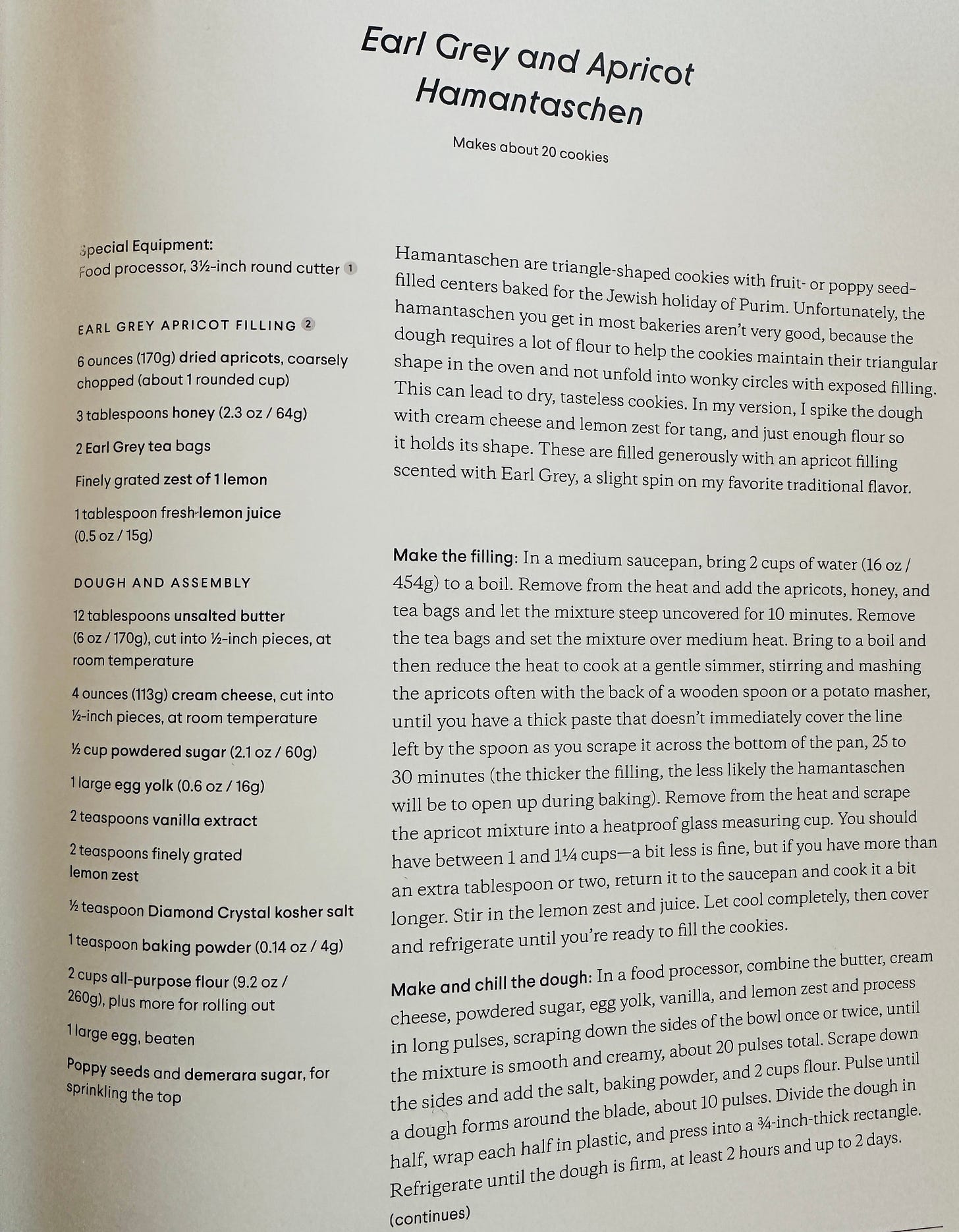
A few notes on “hamantarts”
Since I find Earl Grey tea a bit too perfumy for my taste, I used English Breakfast instead, but I couldn’t taste the tea at all. Earl Grey’s more distinctive flavor would probably shine through better—and perhaps as flavoring for a filling I might actually like it. I also think apricot preserves or jam, possibly cooked down a bit to thicken, would work just as well—and it is less work!
The cookies didn’t remain in their original triangular shape but blossomed in the oven and came out more like open-faced tarts than cookies. But the dough was super flaky and delicious, almost like puff pastry, especially when eaten right out of the oven. Guess I’ll just call these “hamantarts”!
It’s fun to have a variety of hamantaschen fillings. Along with apricot and my homemade hazelnut-cocoa-tahini spread, I also used olallieberry preserves and lemon curd purchased on trip to Cambria. The lemon curd in particular was a standout and made me think of pie. Next up: lemon meringue hamantaschen!
What I love about hamantaschen
There’s something intriguing about a triangular cookie that contains a filling you sometimes have to guess at if the cookie is completely closed—or discover all too exposed when it explodes in the oven like a mini volcano. The triangle shape, variously described as representing Haman’s pocket, hat or ear,1 is a type of perfection that, like so much in life, isn't easily achievable, especially in a baked good. But, as we know, it's the journey, not the goal, that's most important. And that's as true of baking as anything else.
Happy Purim, happy baking, happy journey to perfection. Thanks for reading and don’t forget to like, comment and share this newsletter with everyone you know!
Ruth
Hamantaschen literally means “Haman’s pocket” in German, but is also possibly a play on “Mohntaschen,” which means “poppy seed pockets.” Poppy seed is also a traditional filling for hamantaschen.





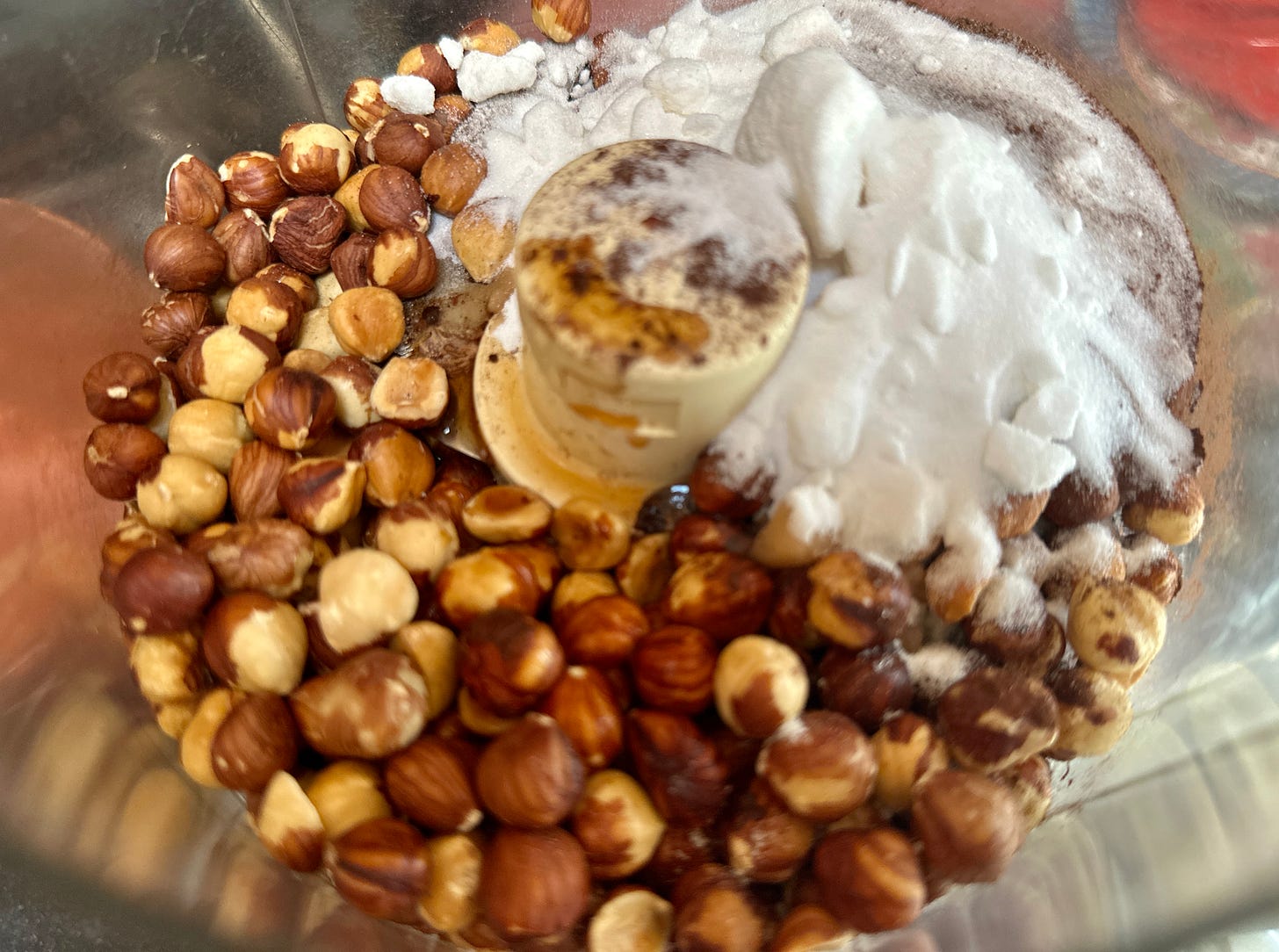
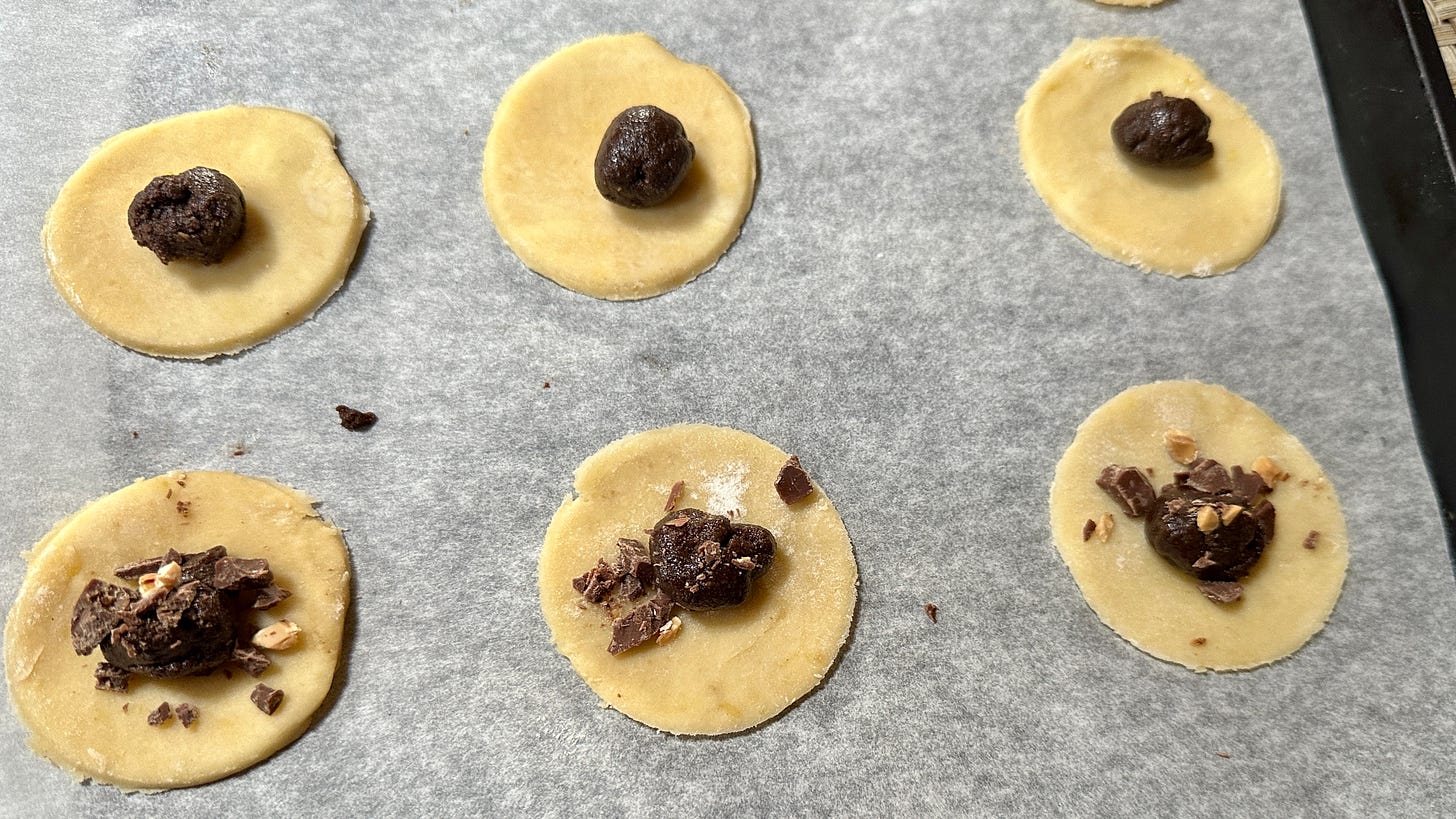

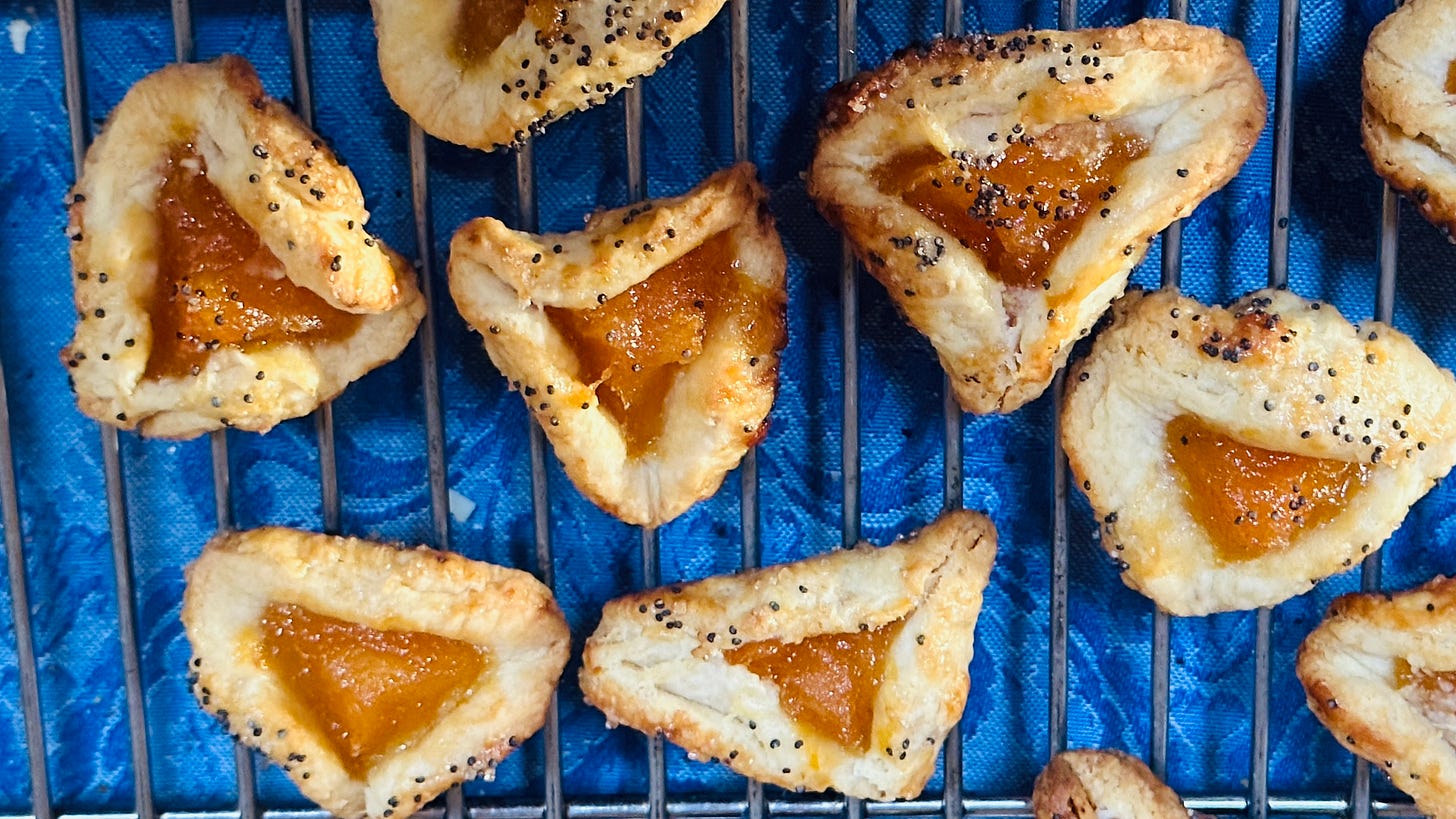
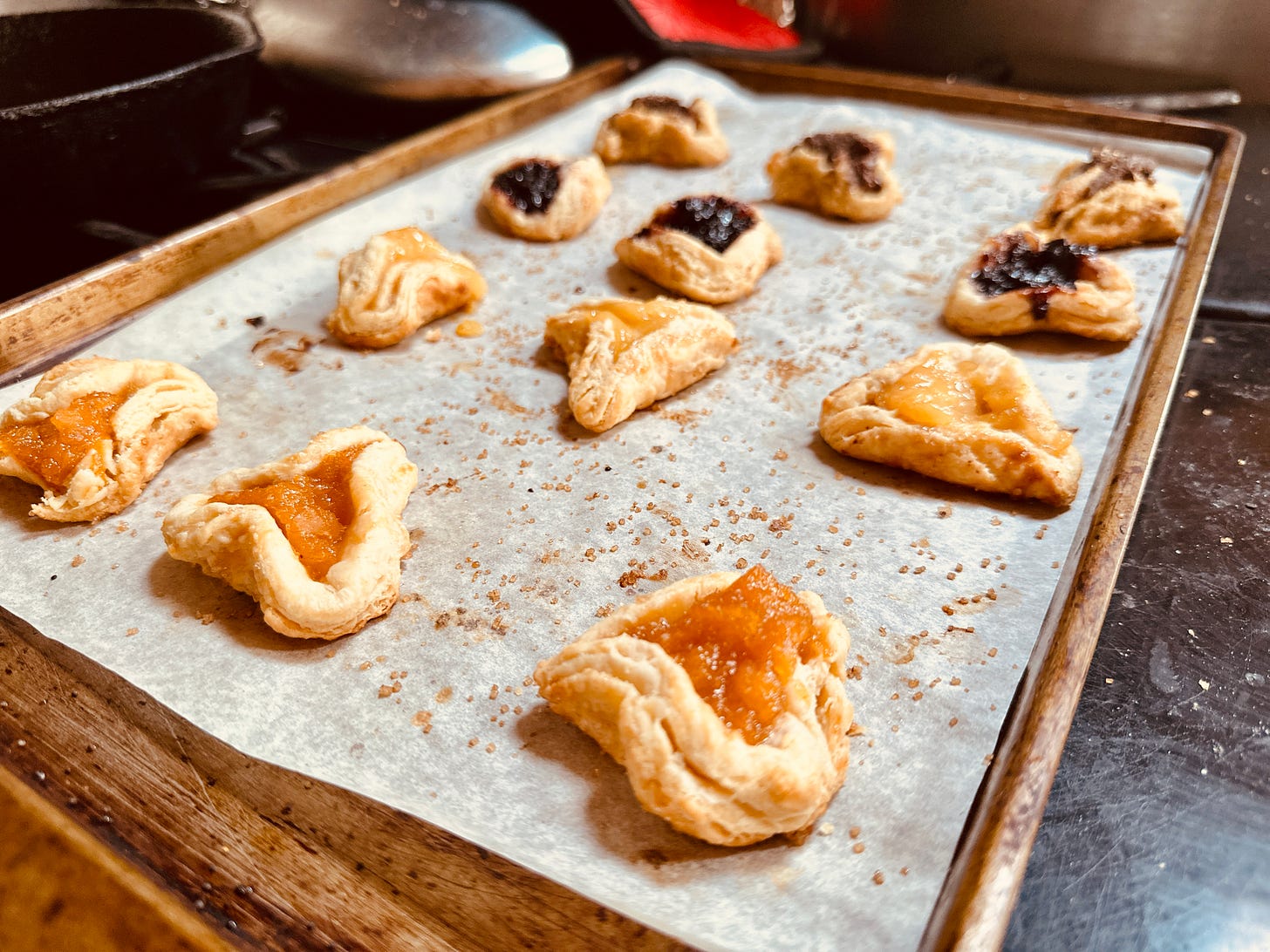
Oh my, Ruth, what a busy and ambitious gal you've been. Everything sounds and looks delish. I hope there'll be some in the freezer. Another great, thoughtful article.
Beautiful Hamantaschen, Ruth,and thank you for your thoughtful assessment of what’s going on in our world. But tonight, happy Purim celebrating with your family! ❤️